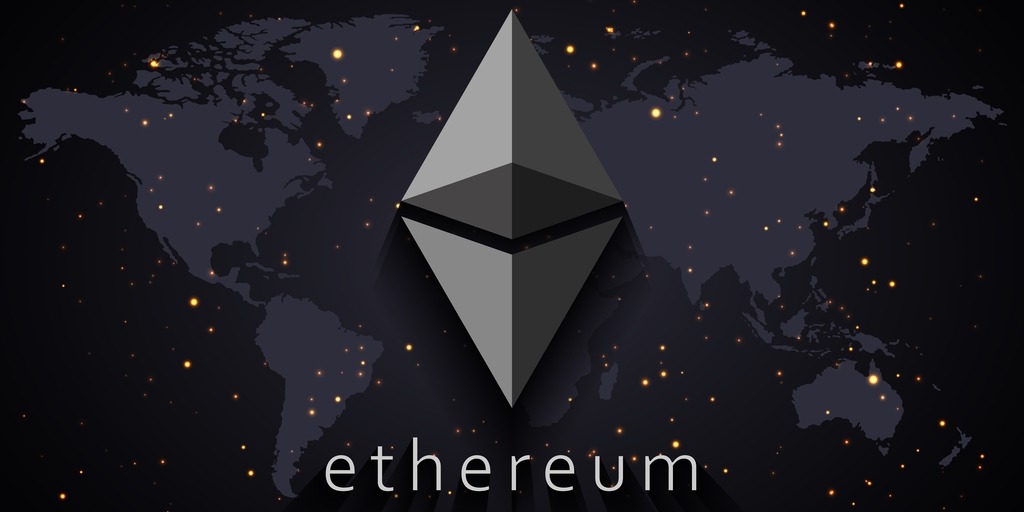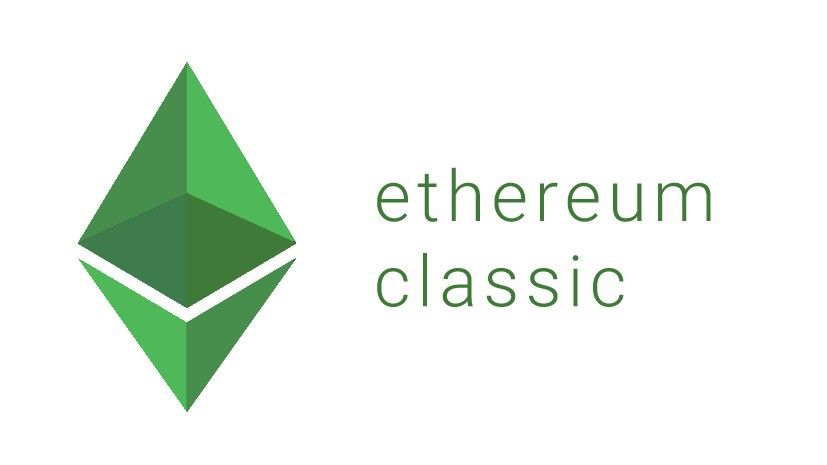Top 10 Reasons Mass Adaptability Is Critical In The Ethereum Evolution
The evolution of Ethereum, since its launch in 2015, represents a dynamic journey marked by technological advancements, community collaboration, and the pursuit of scalability and sustainability. It, conceived by Vitalik Buterin, was created to extend the capabilities of blockchain beyond simple peer-to-peer transactions by introducing smart contracts and a decentralized application (DApp) platform.
Genesis and Early Years (2015-2017): Its journey began with its groundbreaking initial coin offering (ICO), raising funds for development. The Ethereum Virtual Machine (EVM) enabled the execution of smart contracts, revolutionizing the blockchain space. Initial projects, like The DAO, showcased the potential of decentralized autonomous organizations but also highlighted vulnerabilities. The infamous DAO hack led to a contentious hard fork, resulting in the split between Ethereum (ETH) and Ethereum Classic (ETC).
Scalability Challenges (2017-2019): It faced scalability challenges as its popularity grew, leading to network congestion and high gas fees. The limitations of the proof-of-work consensus mechanism became evident. Research and development efforts focused on addressing these challenges, with discussions around 2.0 and the transition to proof-of-stake gaining momentum.
Introduction of Layer 2 Solutions (2019-2020): To mitigate scalability issues, the concept of Layer 2 scaling solutions gained prominence. These solutions involved processing transactions off the main Ethereum chain, reducing congestion. Optimistic Rollups and zk-rollups emerged as promising categories. These Layer 2 solutions aimed to enhance scalability without compromising security.
Ethereum 2.0 Development (2018-present): Ethereum 2.0, a comprehensive upgrade, began development to address scalability by transitioning to a proof-of-stake consensus mechanism. The upgrade unfolds in multiple phases, with the Beacon Chain being the first to go live, marking the beginning of Ethereum’s transition to a more scalable and sustainable network.
Optimistic Ethereum and Rollup Adoption (2020-present): Optimistic Ethereum, an implementation of Optimistic Rollups, was introduced to improve scalability and reduce gas fees. Rollup solutions gained widespread adoption, including projects like Arbitrum, Optimism, zkSync, and others. These solutions brought tangible benefits, such as increased transaction throughput, reduced costs, and improved user experience.
London Hard Fork and EIP-1559 (2021): The London Hard Fork implemented Ethereum Improvement Proposals (EIPs), including EIP-1559, which introduced a new fee structure and burned a portion of transaction fees. This marked a significant shift in the economic model of Ethereum, aiming to address concerns related to transaction fees and create a deflationary pressure on Ether.
Ongoing Research and Development (2021-present): Ongoing efforts in research and development continue to refine existing solutions and explore new approaches. It’s commitment to innovation is evident in its pursuit of Ethereum 2.0 milestones, improvements in gas efficiency, and ongoing collaborations within the blockchain community.
Broader Impact on Decentralized Technologies (2022 and beyond): As its continues to evolve, its impact extends beyond its role as a cryptocurrency. It has catalyzed the growth of a decentralized internet, promoting the vision of a trustless and censorship-resistant global network. Ethereum’s versatility and widespread adoption make it a foundational platform for decentralized finance (DeFi), non-fungible tokens (NFTs), and a wide array of blockchain-based applications.
In summary, Its evolution is characterized by its resilience in the face of challenges, continuous innovation, and a commitment to scalability and sustainability. From its inception as a smart contract platform to its ongoing transition to 2.0 and the adoption of Layer 2 solutions, Ethereum remains at the forefront of the blockchain space, influencing the broader landscape of decentralized technologies and finance.
Also, read- Top 4 Promising Solutions By Solana To The Ethereum’s Challenges in Web3
Top 10 reasons adaptability is critical in Ethereum evolution

Adaptability is crucial for the evolution of Ethereum due to the dynamic and rapidly changing nature of the blockchain and cryptocurrency landscape. Here are ten reasons why adaptability plays a pivotal role in the ongoing development and success of Ethereum:
-
- Rapid Technological Advancements:
- The blockchain and cryptocurrency space is characterized by rapid technological advancements. To stay competitive and relevant, Ethereum must adapt to incorporate new technologies, consensus mechanisms, and security measures.
- Scalability Challenges:
- Ethereum faces scalability challenges as user demand and transaction volume continue to grow. The network’s adaptability is essential for implementing and integrating scaling solutions, such as Layer 2 solutions and Ethereum 2.0 upgrades, to address these challenges effectively.
- Changing Regulatory Landscape:
- The regulatory environment for cryptocurrencies is evolving globally. Ethereum’s adaptability is critical for complying with regulatory requirements and adjusting its features to ensure legal compliance while maintaining decentralization and user privacy.
- User Experience Improvement:
- Adapting to enhance user experience is essential for widespread adoption. Implementing solutions to reduce transaction fees, improve confirmation times, and optimize gas efficiency contributes to a better overall experience for Ethereum users.
- DeFi Innovation and Evolution:
- Decentralized Finance (DeFi) is a rapidly evolving sector within Ethereum. The adaptability of Ethereum is crucial for integrating new DeFi protocols, optimizing existing ones, and addressing security concerns to foster innovation and maintain its leadership in the DeFi space.
- Interoperability and Cross-Chain Solutions:
- The blockchain ecosystem is moving towards greater interoperability between different blockchain networks. Ethereum’s adaptability is vital for integrating cross-chain solutions, collaborating with other blockchains, and facilitating seamless asset transfers between networks.
- Environmental Sustainability:
- With increasing attention on the environmental impact of blockchain networks, Ethereum’s adaptability is necessary for transitioning to more sustainable consensus mechanisms, such as proof-of-stake, to address concerns related to energy consumption and environmental sustainability.
- Community Feedback and Governance:
- It’s decentralized nature involves active community participation. Adaptability is crucial for incorporating feedback from the community, responding to governance proposals, and making consensus-driven decisions to ensure that the network aligns with the values and needs of its users.
- Security Enhancements:
- The constantly evolving threat landscape requires to adapt and implement robust security measures. Regular audits, updates to address vulnerabilities, and the integration of new security protocols are essential for maintaining the integrity and trustworthiness of the Ethereum network.
- Economic Model Adjustments:
- It’s economic model, including transaction fees and incentives, may need adjustments over time. The adaptability of is critical for implementing changes such as Ethereum Improvement Proposals (EIPs), as seen in the case of EIP-1559, to optimize the economic incentives for network participants.
- Rapid Technological Advancements:
Who will be the champion of the next #MemeCoinSeason?
— MASYA ARMY (@masyaarmy2024) January 25, 2024
Something tells me it will be $Masya, Vitalik Buterin’s cat, the best hidden gem on #Ethereum. 😼
🐾🐾🐾🐾🐈🔥🚀
Info:
X: @MasyaButerin
Telegram: https://t.co/EE3S0eg7vR
Website: https://t.co/iifvq1PRsw
CA:… pic.twitter.com/K8C3xjjrko
Benefits of Ethereum evolution

The evolution brings forth a multitude of benefits that contribute to its growth, sustainability, and continued relevance in the blockchain and cryptocurrency space. Here are key advantages resulting from the ongoing evolution of Ethereum:
- Scalability Improvements:
- Its evolution involves scaling solutions, such as Layer 2 solutions and Ethereum 2.0 upgrades, to address network congestion and increase transaction throughput. This results in improved scalability, allowing the network to handle a higher volume of transactions with greater efficiency.
- Reduced Transaction Costs:
- The implementation Improvement Proposals (EIPs), such as EIP-1559, aims to optimize transaction fees. This results in a more predictable fee structure and can lead to reduced transaction costs for users, making more cost-effective and accessible.
- Enhanced Security Measures:
- Continuous research, development, and regular security audits contribute to the enhancement of security. As the network evolves, it adapts to emerging threats, implements best practices, and employs advanced cryptographic techniques to ensure the integrity and resilience of the platform.
- Transition to Proof-of-Stake (Ethereum 2.0):
- The ongoing transition to 2.0 involves a shift from the energy-intensive proof-of-work consensus to a more sustainable proof-of-stake mechanism. This transition aims to significantly reduce the environmental impact of Ethereum, aligning with broader industry trends toward eco-friendly blockchain solutions.
- Decentralized Finance (DeFi) Innovation:
- Its evolution plays a pivotal role in fostering innovation within the DeFi space. DeFi protocols benefit from improvements in transaction speed, cost-effectiveness, and security, attracting more users and developers to participate in decentralized financial activities.
- Non-Fungible Token (NFT) Ecosystem Growth:
- The evolution contributes to the growth of the NFT ecosystem. Improved scalability and lower transaction costs make it more feasible for artists, creators, and collectors to engage in NFT transactions, leading to increased adoption and diversity in the NFT space.
- Adaptation to Regulatory Requirements:
- As regulatory landscapes evolve, adaptability allows it to address compliance requirements without compromising decentralization. The ability to adjust features and protocols ensures that Ethereum can navigate changing regulatory environments globally.
- Community Engagement and Governance:
- It’s evolution involves active community engagement and governance. Through mechanisms like Improvement Proposals (EIPs) and decentralized decision-making processes, the community actively shapes the platform’s future, fostering a sense of ownership and collaboration.
- Interoperability with Other Blockchains:
- It’s evolution supports interoperability with other blockchains. The ability to collaborate and seamlessly transfer assets between different blockchain networks enhances connectivity in the broader blockchain ecosystem, promoting a more integrated and collaborative environment.
- Sustainability and Long-Term Viability:
- It’s evolution contributes to its sustainability and long-term viability. By addressing scalability challenges, optimizing resource usage, and staying adaptable to industry trends, Ethereum positions itself as a resilient and enduring platform for decentralized applications and blockchain innovation.
Conclusion
In conclusion, the ongoing evolution of Ethereum stands as a testament to the platform’s commitment to adaptability, innovation, and sustainability in the rapidly evolving landscape of blockchain technology. The benefits derived from Ethereum’s continuous development extend across various crucial aspects, shaping its present and future trajectory.
The scalability improvements, driven by Layer 2 solutions and 2.0 upgrades, address one of the fundamental challenges faced by the Ethereum network, enabling it to handle a greater volume of transactions efficiently. This not only enhances the user experience but also positions Ethereum as a scalable and resilient platform for decentralized applications, decentralized finance (DeFi), and non-fungible tokens (NFTs).
The focus on reducing transaction costs, exemplified by initiatives like EIP-1559, enhances the economic viability of Ethereum, making it more accessible to a broader user base. The transition to a proof-of-stake consensus mechanism in Ethereum 2.0 not only aligns with environmental sustainability goals but also reflects the platform’s commitment to adapting to industry trends and addressing concerns related to energy consumption.
The evolution has played a pivotal role in fostering innovation within the DeFi and NFT ecosystems. By providing a robust and efficient infrastructure, Ethereum attracts developers and users, contributing to the growth and diversity of decentralized applications and digital asset markets.
Furthermore, Its adaptability to changing regulatory landscapes ensures that it can navigate legal requirements while preserving its decentralized ethos. Community engagement and decentralized governance mechanisms empower users and stakeholders to actively participate in shaping the future, fostering a sense of ownership and collaboration.
Interoperability efforts contribute to a more interconnected blockchain ecosystem, allowing to collaborate seamlessly with other blockchains and facilitate asset transfers between networks. The platform’s commitment to security, evidenced by regular audits and the incorporation of best practices, reinforces trust and confidence in the network.
Ultimately, the sustained evolution contributes to its sustainability and long-term viability. As it continues to adapt to technological advancements, user needs, and regulatory developments, Ethereum remains at the forefront of decentralized technologies, serving as a foundational platform for a wide array of innovative applications and initiatives.
In the dynamic and competitive landscape of blockchain and cryptocurrencies, Its commitment to evolution positions it as a resilient and influential force, driving the broader adoption and integration of decentralized technologies across industries and communities worldwide.
Stay informed with daily updates from Blockchain Magazine on Google News. Click here to follow us and mark as favorite: [Blockchain Magazine on Google News].
Get Blockchain Insights In Inbox
Stay ahead of the curve with expert analysis and market updates.
latest from tech
Disclaimer: Any post shared by a third-party agency are sponsored and Blockchain Magazine has no views on any such posts. The views and opinions expressed in this post are those of the clients and do not necessarily reflect the official policy or position of Blockchain Magazine. The information provided in this post is for informational purposes only and should not be considered as financial, investment, or professional advice. Blockchain Magazine does not endorse or promote any specific products, services, or companies mentioned in this posts. Readers are encouraged to conduct their own research and consult with a qualified professional before making any financial decisions. The featured image used is just a creative depiction of the title and it does not intend to hurt sentiments of any person or institution. If it hurts anyone sentiments, please do not hesitate to reach out to Blockchain Magazine.

 Bitcoin
Bitcoin  Ethereum
Ethereum  XRP
XRP  Tether
Tether  Solana
Solana  Dogecoin
Dogecoin  USDC
USDC  Cardano
Cardano  Lido Staked Ether
Lido Staked Ether  TRON
TRON  Chainlink
Chainlink  Avalanche
Avalanche  Wrapped stETH
Wrapped stETH  Stellar
Stellar  Wrapped Bitcoin
Wrapped Bitcoin  Sui
Sui  Hedera
Hedera  Toncoin
Toncoin  Shiba Inu
Shiba Inu  WETH
WETH  Polkadot
Polkadot  Parkcoin
Parkcoin  LEO Token
LEO Token  Litecoin
Litecoin  Bitcoin Cash
Bitcoin Cash  Bitget Token
Bitget Token  Official Trump
Official Trump  Uniswap
Uniswap  Hyperliquid
Hyperliquid  Wrapped eETH
Wrapped eETH  Pepe
Pepe  USDS
USDS  NEAR Protocol
NEAR Protocol  Ethena USDe
Ethena USDe  Aave
Aave  Aptos
Aptos  Internet Computer
Internet Computer  Ondo
Ondo  Monero
Monero  Ethereum Classic
Ethereum Classic  POL (ex-MATIC)
POL (ex-MATIC)  Algorand
Algorand  OKB
OKB  Cronos
Cronos  Dai
Dai  MANTRA
MANTRA  Render
Render 




